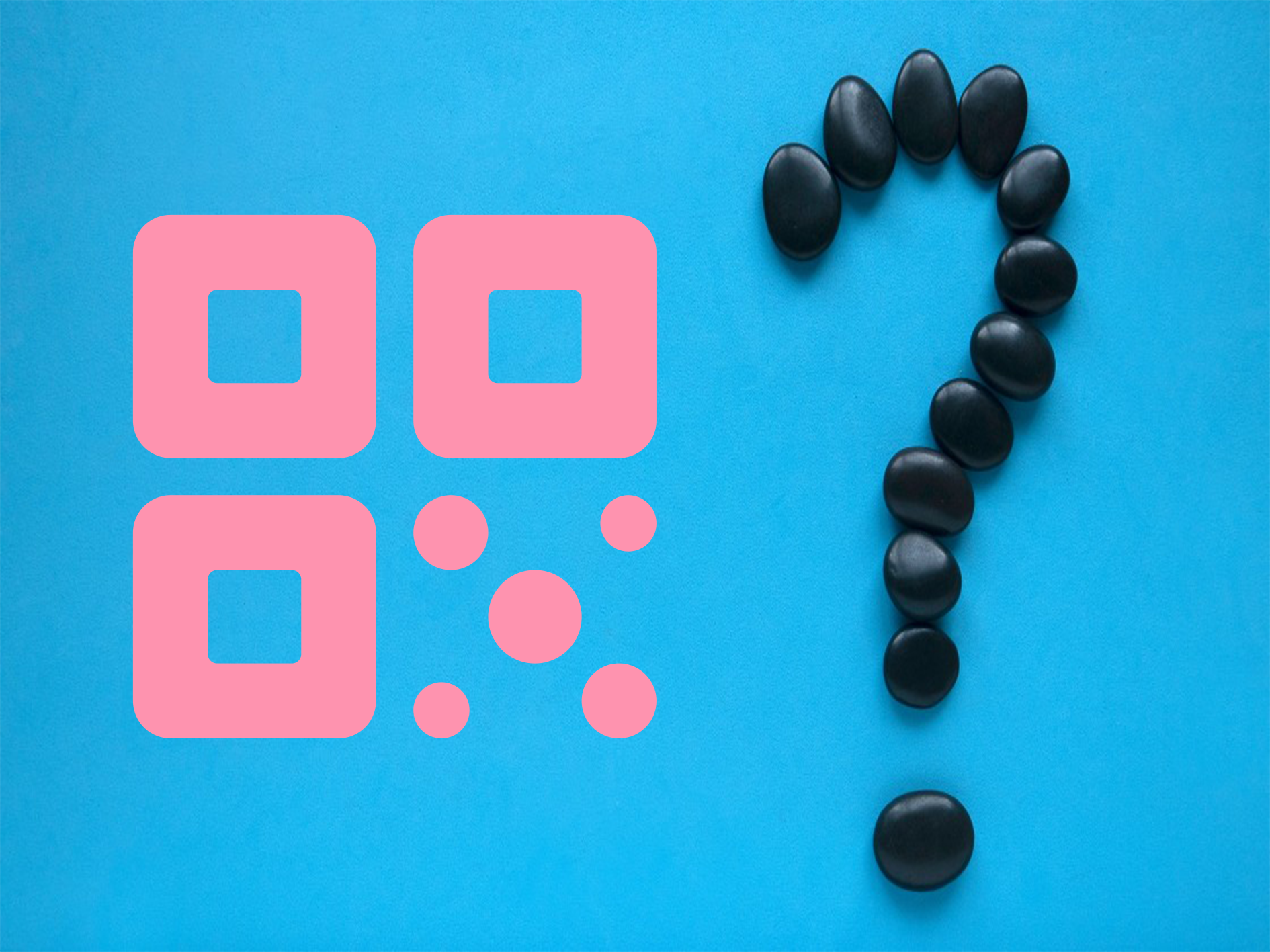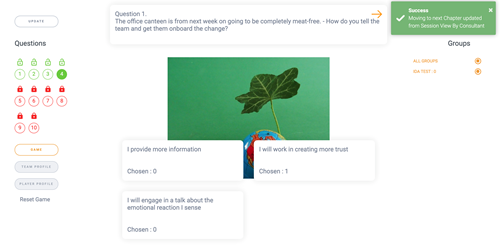
The New & Improved Actee Quiz
Actee is known for our tangible tools used for addressing difficult and sensitive topics whilst providing the discussions with a theoretical aspect, and we even manage to make it engaging and fun! But you probably already know this…
What you might not know, is that we have been finalizing the Actee Quiz tool over the past months, and we’re now ready to share with you the what’s, how’s and why’s of using the Actee Quiz in your facilitation.
The Actee Quiz Is Special
The first thing that makes the Actee Quiz special from for example a Kahoot is an option of inserting a theoretical layer. Where a quiz has earlier been used as a pre-or post-activity to evaluate learnings, we now present you the option of making your quiz into the main event!
We have experimented a lot and can conclude that the old school quiz tool is great as a test in a fun way - where there are only right or wrong answers. This gives the facilitator a chance to see exactly what the participants know or even more important not know. However, why does a quiz have to be so black and white? For us, the learning perspective comes first, and we wanted to add some nuances to the Quiz as a tool – and at Actee we do not work with rights or wrongs. We work with engaging discussions that allow you to find the “correct” answer yourselves for your given situation.
Therefore, we enabled a theoretical layer to our quiz tool, as well as the options of not creating the right or wrong answers but using points instead – and in this way presenting multiple correct or incorrect options to drive a more nuanced debate.
How to add a theory to your Actee Quiz
Theory in a quiz – What is the value?
If we want to provide some intrinsic motivation to cope with more learning, a great tool is to tell the learner something about the learner! This will create an engagement to read more about the theme you want to present to the learner. This is a bit complicated but let me unfold my perspective.
Imagine this:
You want to ensure your organization understands how the new green focus is relevant for everyone in a company and you start by talking about hybrid working and the environmental savings you do by working from home two days per week.
The next initiative is a meat-free canteen and the expected problems that arise from such a radical change.
Then you set up a quiz to get some insights and to distribute information about the expected results. This ends up in a quiz with dilemma cases and three options in each dilemma – options all representing Rick Maurer's acceptance levels from the player in each dilemma presented in the quiz.
In the scenario, the player is presented with three options all reflecting Rick Maurer's understanding of resistance.
1. By providing more information
2. Having a conversation on the emotional reaction
3. Working on creating trust
The “ding dong way” is that really enough?
Imagine your score and the regular way for a quiz will be like this:
Option 1. You get 10 points (out of 30 possible points)
Option 2. You get 5 points (out of 30 possible points)
Option 3. You get 20 points (out of 30 possible points)
At the end of the quiz, let’s say you have 35 points, and you rank amongst the top of 80% of all players in the same quiz.
A quiz is a great way to reinforce dilemmas and the game element makes you realize one option is more suitable than others.
Some participants might think it´s great to play and get learnings using a quiz and playing a game is a way to move the organization forward.
But you might think; giving points are not exactly what you as the quiz-creator had in mind.
You probably want to get more knowledge on how the players have solved the dilemmas and the specifics of the theory used to solve the dilemmas.
The quiz we have created has embedded an option to tag each answer-option with a theory extending the quiz as a tool to provide a personal profile for the player and an accumulated profile of the quiz for you as the facilitator.
After each game, the learner and facilitator can see profiles on how the players have chosen to solve issues and this opens for a range of other ways to facilitate the given results instead of just a score: 2 out of 10 and scored 330 points just because you were fast - the ding dong way.
________________________________________________________
The depth of learning in a simple way
By having the theory in your quiz, you create a foundation to ask participants, “why and what was tricking you”, whether the participant agrees with the personal player profile, and if the team profile is beneficial for the task at hand.
What is important is that you as the quiz builder must think about the options and where they come from and what they reflect in terms of theory.
Summed up - theory creates better options and more reflection and therefore a higher learning outcome and value for the player and the organization.
Of course, A quiz needs to include the fun and engaging aspects, and of course, a quiz needs to be able to scale the fun factor to include sounds and videos.
To demonstrate what it all means we have created a quiz focusing on Rick Maurer resistance levels, the story in the quiz is having a focus on the issues when going green is on the agenda.
At the end of the quiz with 10 questions, you will be able to see the gathered data and profile that demonstrates your approach/profile to change using Ricks resistance levels.
If you add it to a session, you will also be able to control a quiz step by step in your facilitation and end up with the collective profile from all session’s participants.

If you want to test the quiz and get your own profile you can play here:
Resistance to going green quiz
Resistance to hybrid working quiz
There are no limitations anymore on what you can use your quizzes for!
________________________________________________________
MOTIVATION
What makes the theoretical layer on the quiz tool measure up to our other game tools is the fact that the player's intrinsic motivation is stimulated. All of the Actee games aim to be engaging and fun despite the heavy subjects. But where the Cycle, Bubble and Barometer games are longer, more complex, and in-depth tools, the quiz can now deliver similar content, open for engaging discussions in a faster and far simpler format, which is great for shorter sessions.
However, there is also the aspect of extrinsic motivation through the component of the personal profiles received in the end based on the data from the player's answers. Especially if the theory is added to the quiz, your personal profiles will reflect how you act in the given context. This also provides insightful data to your facilitator.
________________________________________________________
FACILITATOR
As a facilitator of the quiz tool, there are still all the Host View options of seeing how your participants answered and their personal profile so that you can evaluate the learnings of your facilitations. You also have the option of locking chapters to ensure that all participants are moving at the same pace and allow a blockage from moving forward without the facilitator’s approval.
What does the Quiz Host View show?
________________________________________________________
QUIZ ELEMENTS
We have multiple elements in the Quiz which improves the engagement level; there are options of adding in pictures, videos and recordings as well as all the customizable factors of background and text colour.
________________________________________________________
So, what can we conclude?
We need to start thinking more outside the box in our learning practices and facilitation. A quiz is no longer just a quiz, it can be an imperative asset in your L&D practices, and the fact that it is an ‘old’ method, does not constrain you to the old quiz limits.
We want you to fully embrace the creative freedom the new Actee Quiz tool can provide whilst keeping the simple and fun format of the tool we know and love. Hopefully, this will inspire your future L&D practices.
Play Go Green Quiz